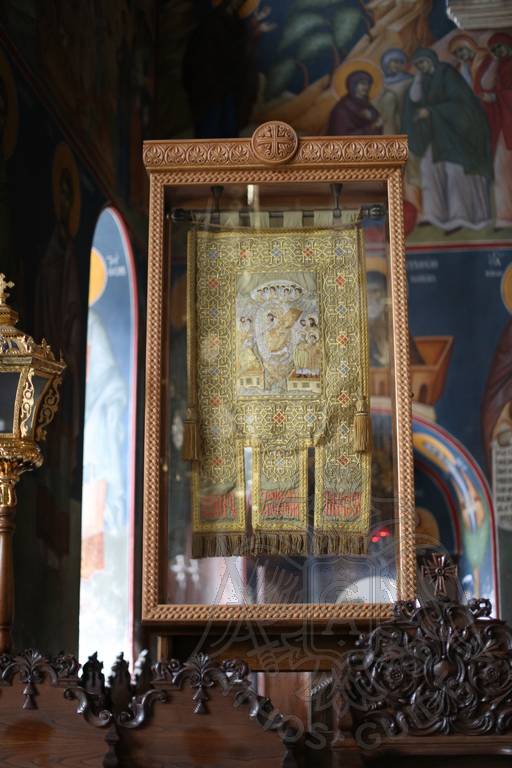
The monasteries of Mount Athos have extensive collections of embroidery and elaborately decorated fabrics. These are divided into three categories:
- those used during the divine services, mainly related to the sacrament of the Holy Communion,
- those used for the decoration of the Holy Altar, the temple, the icons, etc,
- those used for the vestments of the clergy.
Gold and silver stitching, on silk, with pearls and precious stones are some of the most refined details of the embroideries. Their weaving and delicate structure allows the representation of stunning images and embroidered designs.
Byzantium has always been famous for its fabrics and embroidery. Τhere was a huge demand from all over the world, which strengthened the diplomatic influence of the Byzantine Empire.
However, fabric is not a material that can easily be preserved for a long time. The fall of Constantinople in 1204 and 1453 contributed to the destruction of great works and embroideries. Mount Athos has also suffered numerous raids. The devastating fires were as well a detering aspect in the production and preservation of embroidery.
Among the oldest woven relics of Mount Athos there are the vestments of the monks, including the gold-embroidered garment of Nikiforos Fokas, which is kept in the Holy Monastery of Great Lavra.
The Holy Monastery of Vatopaidi is home to the Holy Cincture of Theotokos, which was donated to Mount Athos by the wife of the Emperor Leo VI the Wise. In the Holy Monastery of Iviron it is kept the robe of the Emperor Tsimiskis, decorated with ten representations of lions and bicephalic eagles.
After the fall of Constantinople, embroideries began to arrive in Mount Athos from the islands that had not yet come under Ottoman rule. Nevertheless, the workshops in Constantinople reopened again, supplying their products to all the Orthodox countries. Similar workshops appeared in Mount Athos much later, from the beginning of the 18th century.

